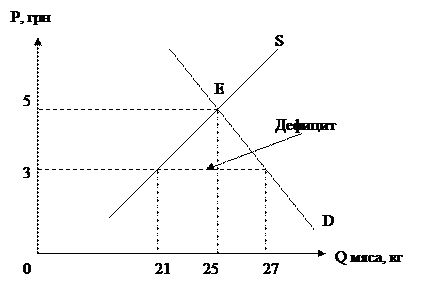Introduction. Мicrobiology as a science studies the morphology, systematics and physiological characteristics of microorganisms
Мicrobiology as a science studies the morphology, systematics and physiological characteristics of microorganisms, their conditions of life, their role in nature and human life in health and illness. Microbiology is an integrated discipline combining the following independent subjects: bacteriology, virology, mycology, immunology and protozoology. Medical microbiology as a science studies biological properties, pathogenicity factors, implementation mechanisms of infectious diseases pathogens at the cellular and molecular genetic levels and plays important role in development of diagnostics, treatment and prevention methods. Medical Microbiology is closely linked with Infectious Immunology that studies the biological mechanisms of organism self-defense aimed at recognizing and destroying infectious agents. Knowledge of laboratory diagnosis of infectious and non-infectious diseases of microbial etiology in Kazakhstan and abroad is necessary for understanding of pathogenetic mechanisms of diseases, for correct and timely diagnosis, treatment and prevention. Knowledge of laboratory diagnosis of infectious and non-infectious diseases of microbial etiology in Kazakhstan and abroad is necessary for understanding of pathogenetic mechanisms of diseases, for correct and timely diagnosis, treatment and prevention. 3.2. The goal of discipline:The purpose of teaching microbiology, virology and immunology is to develop students knowledge and understanding of the role of microorganisms in infectious pathology human values of microorganisms in the infectious process, the role of microbiology in addressing reduction and elimination of infectious diseases. Teaching microbiology, virology and immunology of dental students is essential in the preparation of the doctor - dentist, because it gives them an idea of the microflora of the oral cavity, on the etiological role of opportunistic pathogens in the occurrence and spread of diseases odontogenous nosocomial infections, methods of laboratory diagnosis, principles rational chemotherapy and prophylaxis of microbial diseases, for assessing the status of the protective factors of the organism in general and in particular the oral cavity. 3.3 Objectives of discipline: · To understand classification and biological properties of pathogenic and opportunistic microorganisms; · To learn techniques of isolation of pure culture from clinical specimens, the principles of identification, detection of sensitivity (resistance) of microorganisms to antimicrobial agents; · To understand molecular mechanisms of the host-parasite interaction, the pathogenesis of diseases caused by micro-organisms; · To learn main defense mechanisms against infectious agents and types of immune responses in humans; · To learn the concept of pathogenesis, the basics of infectious immunity, the principles of specific prophylaxis and treatment of infectious diseases; · To be familiar with the modern methods of microbiological diagnosis of common infectious and non-infectious diseases; · To use the correct techniques of biological material sampling for microbiological investigations. 3.4 Learning Outcomes: Learning goals:Generate knowledge: morphological, physiological, pathogenic properties of microbes - infectious agents; etiology and pathogenesis of microbial (carious and non-carious) dental diseases and their effects on the body; principles of microbiological examination of patients; principles on the use of antimicrobial agents for the treatment and prevention of oral diseases; methods for determining the antimicrobial activity of antibiotics and disinfectants; methods of disinfection and sterilization of dental instruments; microbiological safety rules; Factors specific and nonspecific defense of the organism, including in the oral cavity; pathogenesis and nature of lesions of the maxillofacial region in bacterial (syphilis, lupus, leprosy, actinomycosis) and viral infections (herpes, rhabdoviridae, Coxsackie A papovaviruses HIV), candidiasis, treatment and prevention of specific; the cause and diagnosis of dysbiosis oral disbiotic possible shifts in somatic pathology (halitozis). The students should be able to show skills on:an algorithm of diagnosis, treatment and rehabilitation of patients with diseases of the teeth, periodontal, oral mucosa, inflammatory diseases of the maxillofacial area; expertly selected material from the mouth of the pathological focus for microbiological examination in view of the preliminary diagnosis of the disease; arrange referral form material to the microbiology laboratory; evaluate the results of the study and determine their diagnostic value; given laboratory findings to select the optimal antimicrobial agent for the treatment; able to carry out preddezinfektsionnuyu processing tools; observe the rules of aseptic and antiseptic; infectious ensure patient safety and medical staff; set and consider an allergy test; participate in the preventive, hygienic and anti-epidemic measures. Student dentist should have the skills to:Compliance and disease prevention and safety regimen in bacteriological laboratories; to adhere to rules on infectious patient precautions and safety of medical personnel in the dental hospital; disinfection of infected material, antiseptic hand washing, contaminated material under study; before carrying out disinfection process used dental instruments; preparation of microscopic preparations of pathological material (pus, etc.); coloring preparations microscopy system with immersion light microscope; sowing the primary material for culture media. Master the skills: • Collection transport of specimens for microbiological investigations to the bacteriological laboratory; • Collection of specimens for microbiological examination; • preparation of microscopic smears from pathological specimens (pus, faeces, etc.). • Immersion Oil Microscopy • differentiation of microorganisms in accordance with morphological, tinctorial, cultural, biochemical, serological features • interpretation of bacteriological, virological and serological investigations results • isolation of microbial pure culture. • Carrying out microscopic methods of research
|




